You can hear history echo through the labyrinthine chambers of this cave city carved into the rugged cliffs of Georgia.
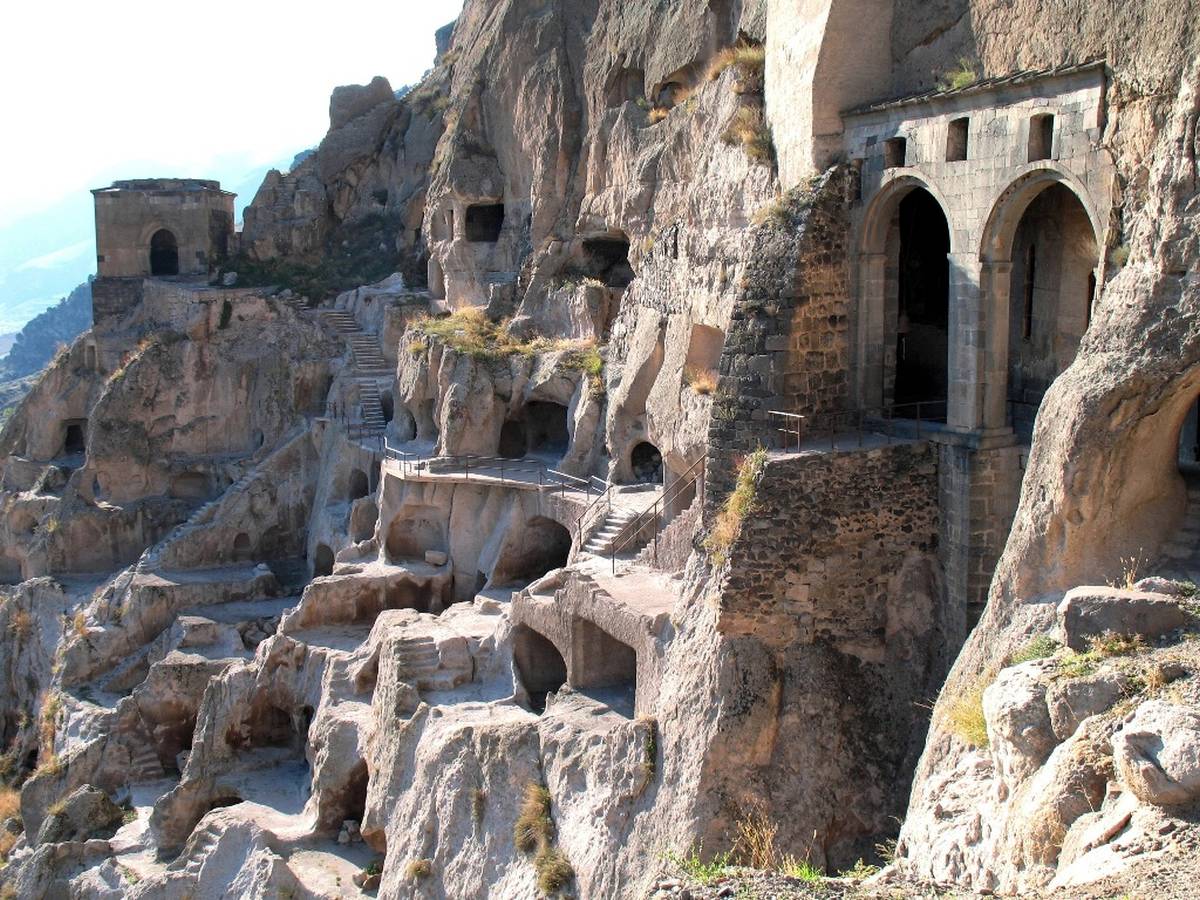
The cave complex of Vardzia was built as a refuge from the Mongol invasions. Photo: Lidia Ilona
If you are looking for a unique and fascinating destination in Georgia, don’t miss out on the Vardzia cave city in the south of the country. This impressive complex of caves and tunnels was carved into the slopes of the Erusheti Mountain in the 12th century, as a refuge from the Mongol invasions.
It was also a cultural and religious center, where the famous Queen (King) Tamar ruled and supported the arts and sciences.
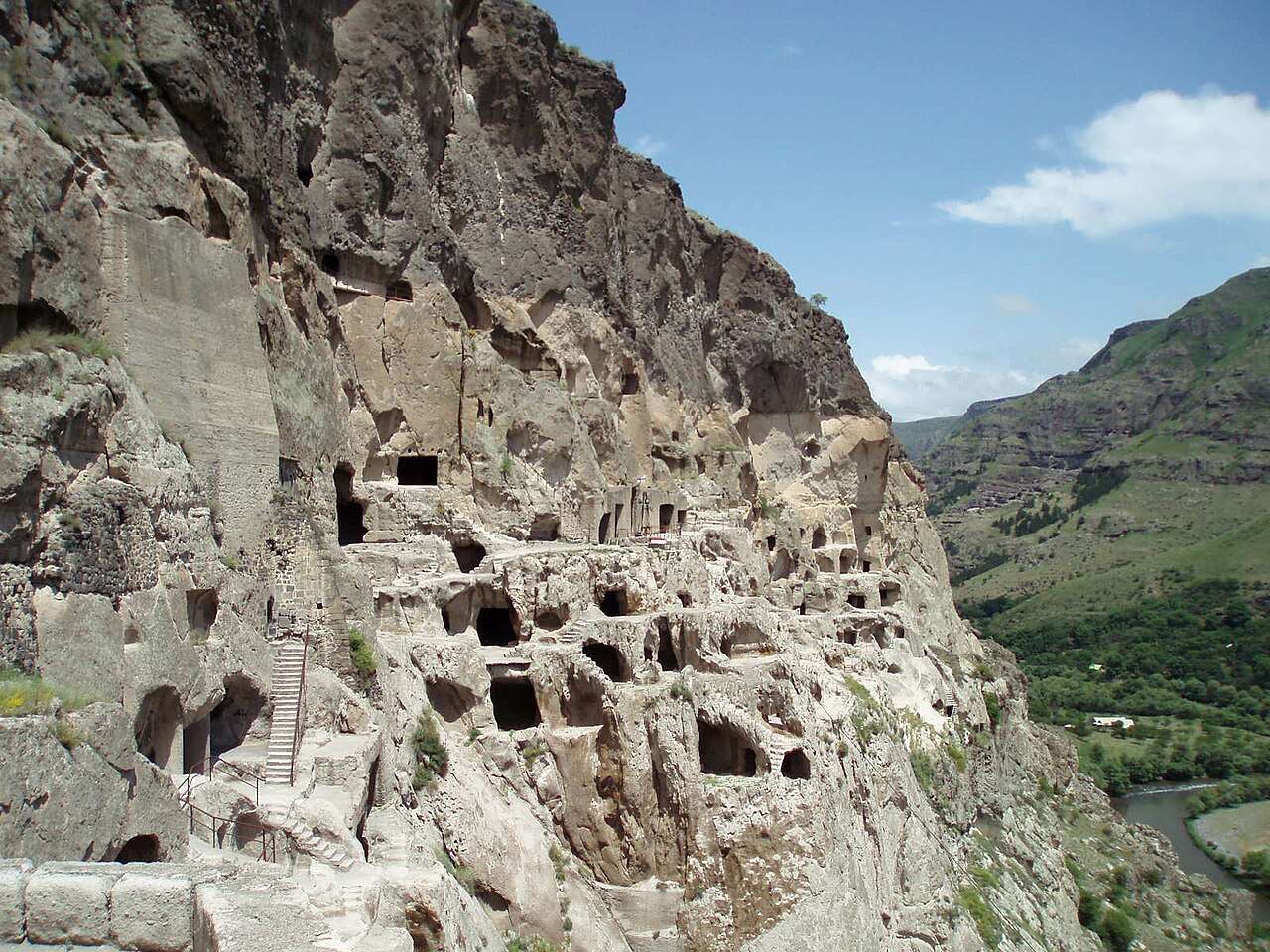
Five monks still live in the mountain dwellings, ringing the bell in the tall arch every morning at seven. Photo: David Holt
Vardzia was originally designed as a fort by King Giorgi III, who wanted to protect his kingdom from the external threats. He started the construction of the cave city in 1184, and his daughter Tamar continued his work after his death.
Tamar was a remarkable figure in Georgian history, expanded the territory of Georgia and made it a powerful state in the region. She was also the first and only woman in Georgia to be crowned as a king. Even today, Georgians mention “King Tamar” with pride and sincerity, devoid of any sarcasm.
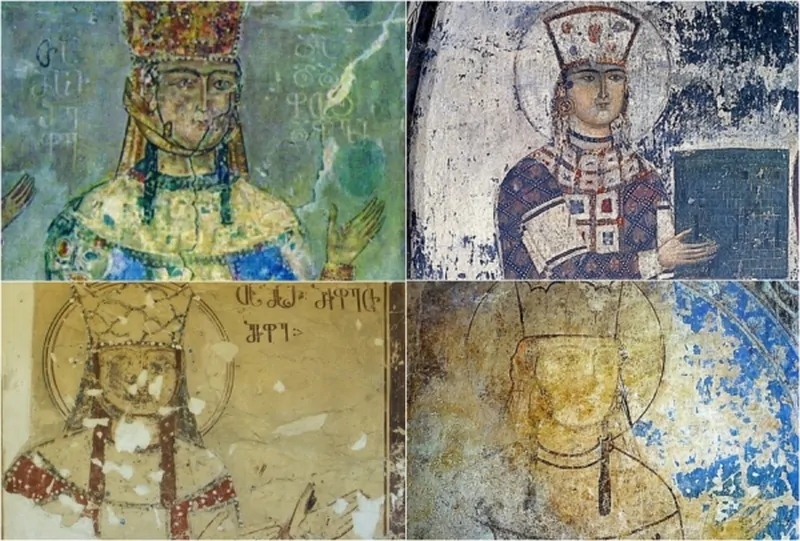
The four best-known medieval frescoes depicting Queen Tamar of Georgia (r. 1184-1213). Source: Georgian Journal
Under Tamar’s reign, Vardzia grew into a thriving city which boasted over 6,000 rooms spread across 19 levels, fulfilling diverse functions such as providing sleeping quarters for the 200 resident monks and serving as defensive structures.
The caves also included other dwellings, churches, chapels, wine cellars, dining halls, a library, a bakery, a pharmacy, and even a secret tunnel that led to the river.
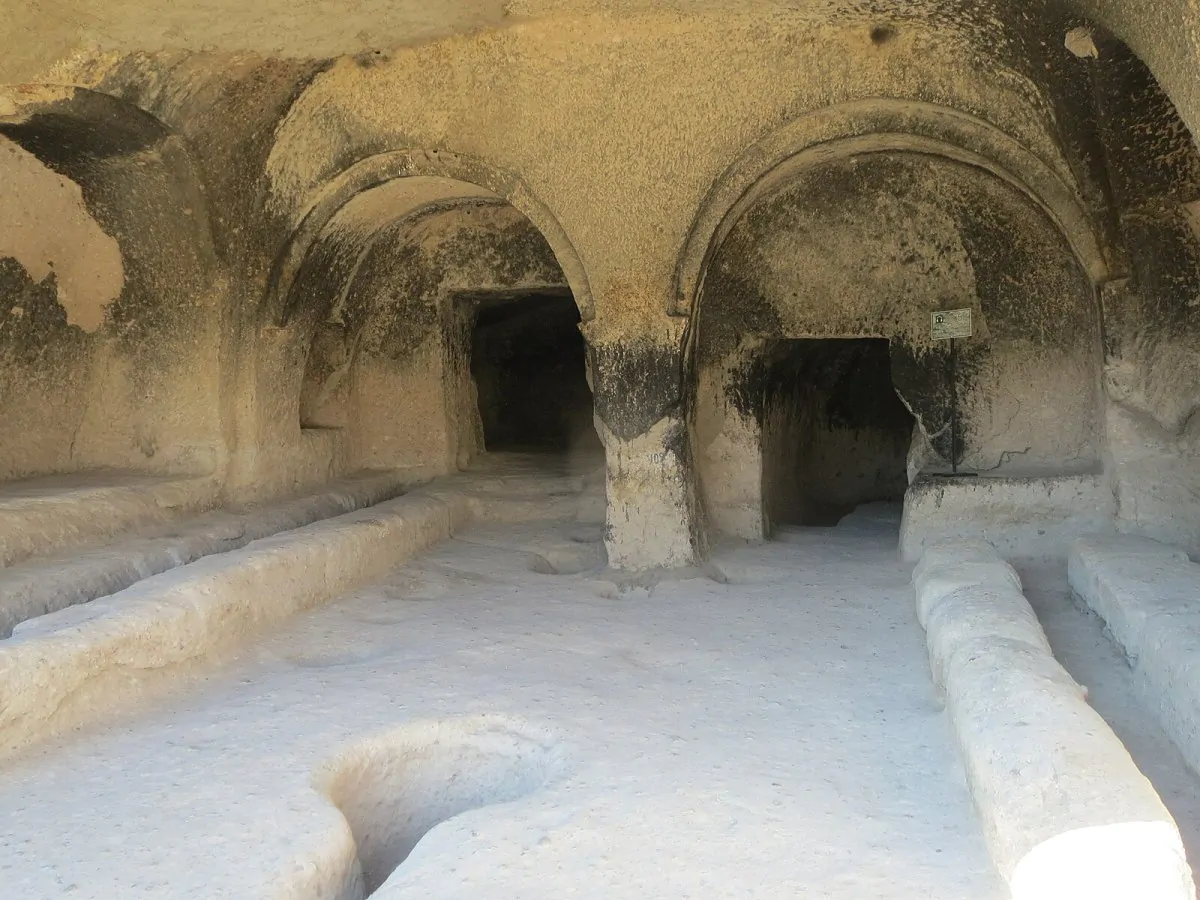
In its heyday, the complex had over 6,000 rooms. Photo: Ninomirotadze
A recent site 3D scan of the site unveiled approximately 641 remaining distinct chambers distributed across 13 levels, spanning about 500 meters along the cliff face.
Situated deep within the rock’s interior, these caves are linked by an intricate network of tunnels, including some exceeding 150 meters in length, as well as staircases and terraces.
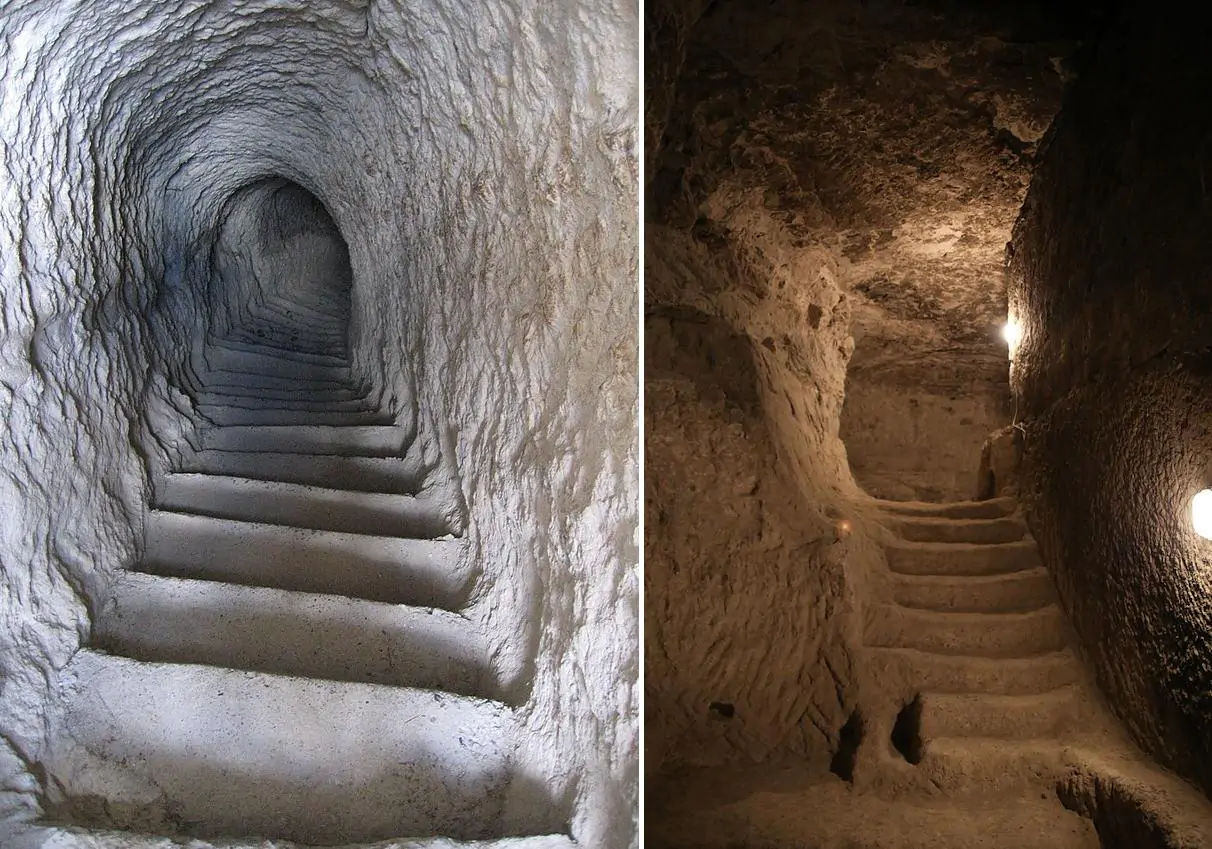
Stairs down, stairs up, tunnels everywhere. Photo: henribergius / Bolo77
The most important building was the Church of the Dormition, which was decorated with beautiful frescoes depicting Tamar and other saints. The church also housed a precious icon of the Virgin Mary, which Tamar believed had helped her win several battles.
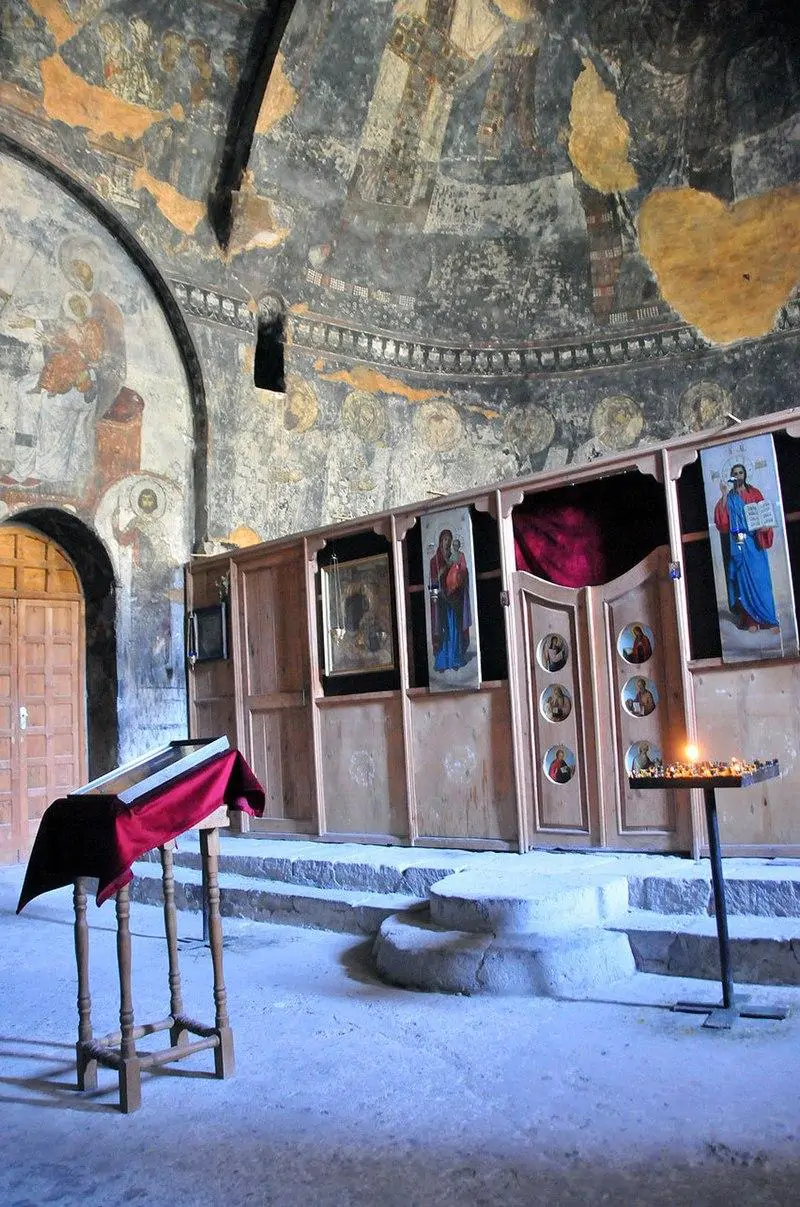
Church of the Dormition in Vardzia Cave City, Georgia. Photo: anjči
Vardzia’s glory days did not last long, however. In 1283, a devastating earthquake shook the region and destroyed most of the cave city. Many residents left Vardzia, and only a few monks remained to guard the monastery. The site was further damaged by the Ottoman and Persian invasions in the following centuries.
Today, only about 500 caves survive, but they still offer a glimpse into the past and the remarkable achievements of the Georgian people.

Panorama of Vardzia cave city. Click image to enlarge and zoom in. Photo: Kotasik
Visiting Vardzia is an unforgettable experience. You can explore the caves and tunnels that are open to the public (visitors have access to almost 300 rooms), and admire the stunning views of the valley and the river. You can also see the frescoes in the Church of the Dormition, which are still well-preserved after 800 years. You can even stay overnight in one of the guesthouses near the site, and enjoy the hospitality and cuisine of the local people.

